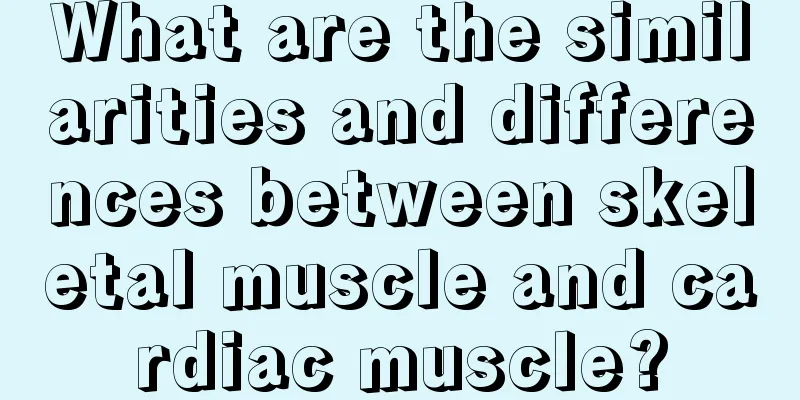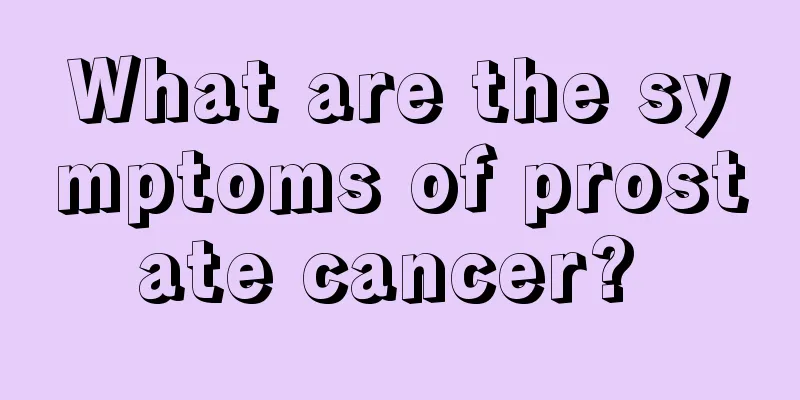What are the similarities and differences between skeletal muscle and cardiac muscle?

|
Skeletal muscle and cardiac muscle are two different muscle tissues. Skeletal muscle cells are relatively long, have fewer branching cardiac muscle cells, and do not rely on extracellular calcium ions for influx. Cardiac muscle cells have certain intercalated discs, through which they synchronize their potentials, and also rely on extracellular calcium ions for influx. It can be seen that there are many similarities and differences between the two. 1. Similarities and differences between skeletal muscle and cardiac muscle Skeletal muscle cells are relatively long and have fewer branches than cardiac muscle cells. Cardiac muscle cells have intercalated discs, which synchronize action potentials. The contraction of cardiac muscle cells depends on the influx of extracellular calcium ions, while skeletal muscle does not. 2. What is skeletal muscle? Skeletal muscle, also known as striated muscle, is a type of muscle. Skeletal muscle is composed of thousands of contractile muscle cells (also called muscle fibers because of their long, thin fiber-like shape) and is covered and connected together by connective tissue. Any physical activity is the result of skeletal muscle contraction. The human body has more than 600 skeletal muscles, accounting for about 40% of the body weight. Muscle strength and endurance directly affect exercise performance. 1. What is myocardium? Myocardium is a type of muscle tissue composed of myocardial cells. The structure of cardiac muscle cells is basically similar to that of skeletal muscle and also has striations. In a broad sense, myocardial cells include specially differentiated myocardial cells that make up the sinoatrial node, intraatrial bundle, atrioventricular junction, atrioventricular bundle (i.e., His bundle) and Purkinje fibers, as well as general working cells of the atrial and ventricular muscles. The first five types constitute the cardiac pacemaker conduction system. They contain very few or no myofibrils and therefore have no contractile function. However, they have autonomy and conductivity, and are the functional basis of the heart's autonomic activity; the latter two have contractility, and are the functional basis of the heart's systolic and diastolic activity. Clinical manifestations of cardiomyopathy 1. Dilated cardiomyopathy Dilated cardiomyopathy, also known as congestive cardiomyopathy, is pathologically characterized by myocardial degeneration, fibrosis, and cardiac chamber dilatation. Its main feature is myocardial contractile dysfunction, which leads to heart failure. Patients are prone to various arrhythmias and embolism, or even sudden death. Most patients have symptoms such as palpitations, shortness of breath, chest tightness, and pain and discomfort in the precordial area. In severe cases, symptoms of congestive heart failure such as edema, orthopnea, and liver enlargement with tenderness may occur. 2. Hypertrophic cardiomyopathy Hypertrophic cardiomyopathy is characterized by asymmetric myocardial hypertrophy and reduced ventricular cavity size. Patients may have symptoms such as palpitations, shortness of breath, chest tightness and pain, and exertional dyspnea. In severe cases, dizziness and syncope may occur. When accompanied by outflow tract obstruction, dizziness or even loss of consciousness is often induced when standing up or exercising. 3. Restrictive cardiomyopathy Restrictive cardiomyopathy is characterized by endocardial fibrosis, which affects both the contraction and relaxation functions of the heart. The patient has right heart regurgitation disorder and significant right heart failure, and may experience symptoms such as palpitations, dyspnea, edema, distended jugular veins, enlarged liver and ascites. |
<<: How to exercise the cervical spine and shoulders
>>: How to store sparkling wine
Recommend
Symptoms of prostate cancer bone metastasis
Among male diseases, prostate disease is the most...
Signs of death from neuroblastoma
Neuroblastoma is a common childhood cancer that c...
What are the types of ovarian cancer
For patients with ovarian cancer, the key to trea...
What are the causes of itchy hands and feet
Itching of hands and feet is very uncomfortable, ...
Does renal hamartoma require surgery? Surgery is recommended to eliminate renal hamartoma in three situations
Renal hamartoma is a benign tumor, so when the tu...
Which hospital should I go to for ovarian cancer examination
With the rapid spread of media, the popularizatio...
What are the fruits that can sober you up
If you want to sober up quickly, you can eat more...
What are the treatments for early lung cancer?
What are the treatments for early lung cancer? Lu...
How to deal with mild suppuration of wounds?
Whether it is a scrape or a bruise, there will be...
Pay more attention to diet when treating rectal cancer
As one of the digestive tract diseases, the treat...
What to do about lymph follicular hyperplasia?
Usually when we talk about lymph hyperplasia, we ...
How should hyperthyroidism heart disease be examined?
Hyperthyroid heart disease refers to a condition ...
Early detection of esophageal cancer
In recent years, the incidence of esophageal canc...
Pay attention to your daily diet and get rid of melanoma as soon as possible
The treatment of melanoma is a long process. Outs...
Advantages of Fluorescent Cystoscopy for Bladder Carcinoma in Situ
Bladder cancer is a malignant tumor that accounts...









